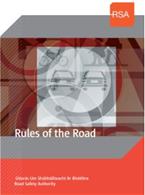Safety for adult passengers
Adults are responsible for their own safety and the safety of other passengers.
As an adult driver you are responsible for the safety of all passengers. Equally, as an adult passenger in any vehicle you must take personal responsibility for your own safety. That means always wearing your seat belt correctly and securing loose items in your vehicle that could cause harm in a collision.
Always wear your seat belt
You must wear your seat belt at all times, no matter how long or short the journey is. A collision can happen in a split second and even hard braking can cause you serious injury if you’re not wearing yours. So, whatever your journey, e.g. travelling to a match with mates, off to a work-related meeting or nipping down to pick up your takeaway order – you must:
- only travel in a vehicle where you have your own seat and seat belt
- never share a seat belt with another passenger
- never travel in a vehicle that’s overcrowded.
It’s your responsibility - and the law
If you are over 17, the law states that you are responsible for wearing your seatbelt. Apart from the risk of being seriously injured, you are also at risk of being fined €2,000 if you are caught not wearing your seat belt.
Remember, you can also seriously injure the driver or your fellow passengers if you are not secured properly.
How to wear your seat belt correctly
Seat belts are designed for anyone who is 150cm (about 5ft) in height and taller. Despite seeming a simple task, there is a proper way to wear your seat belt. Wearing it correctly will minimise the risk of serious injury to you or your passengers in the event of a crash.
The position of your seat belt is very important. By making a simple correction to the position of the seat belt on your body, you can make a huge difference to the severity of your injuries in a collision.
To wear your seat belt correctly, you must:
- Allow plenty of excess strap and plug your seat belt into the buckle.
- Position the lap section of the seat belt on your pelvic region or tops of your thighs – not on your stomach.
- Pull the slack on the lap section and feed it up to your shoulder.
- Position the diagonal section of the belt across your torso or chest and on your shoulder – not your neck.
Many cars have shoulder-height adjusters to help position the seat belt on top of your shoulder.
Some buses have lap belts only. To wear these correctly, you should:
- buckle the lap belt
- position it on your pelvis
- tighten any slack.
Secure any loose items in your car
Loose items in your vehicle can become dangerous missiles in the event of a crash. These can cause serious injury to you and your passengers.
To prevent this you should:
- store all luggage and big or heavy items in the boot of your vehicle
- remove or limit the amount of smaller loose objects in your vehicle and properly secure them, e.g. mobile phones, laptops, work tools, etc.
Rules of the Road
Download and read the Rules of the Road for the laws regarding seat belts as well as tips and advice on driver and passenger safety on our roads.

Driver and passenger safety
Many of our road safety campaigns and publications cover driver and passenger safety.



